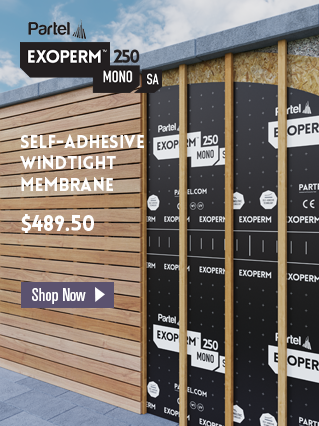Airtightness is one of the fundamental building blocks in high-performance construction. If an assembly is airtight then air leakage, the uncontrolled inward or outward movement of air through gaps, cracks, holes, splits and tears, is reduced to a minimum.
In high-performance construction, a continuous air barrier separates the interior conditioned space and the exterior environment. Some wall penetrations in this air barrier are unavoidable in order to facilitate the supply of key services throughout the building.
Typical penetrations through the walls of the air barrier system include:
- Pipes, vents, cables and tubing. These will require intentional cuts and holes to accommodate the services. To ensure a continuous air barrier permanent seals can be achieved for penetrations of various shapes and sizes using a number of technical solutions – sealing grommets, butyl rubber-based tape or widely known roll adhesive tapes.
Installation of preformed airtight grommets such as KABSEAL, offer a more precise, quick and long term sealing solution compared to most other methods. The self-sealing base fastens securely to the wall and its flexible design maintains an effective, robust and secure seal around the service penetration. Grommets ensure the long-term integrity of the airtight or windtight system; their tight, permanently flexible fit allows for small amounts of movement, and vibration without compromising the seal.

- Joists and electrical fixtures. These will require rectangular, square and sometimes irregular cuts to provide access to services. Our high-performance unique modified butyl and roll adhesive tapes address the challenges of sealing around rectangular, square and or irregular shapes.
Butyl rubber-based rubber tapes such as CONLEX BUTYL offer a timesaving solution whilst addressing the challenges of sealing around complicated shaped penetrations that require greater flexibility. This tape is installed in one continuous piece, and has the added benefit of a split release liner to aid effective installation when the two surfaces being sealed are at different angles. Its highly flexible properties enable it to be pulled, stretched and moulded around the corners and curves of wall penetrations. The combination of its advanced adhesive properties and low restoring forces results in a permanent airtight seal that doesn’t separate or crack over time.

An air barrier has to be continuous in order to be effective; it is critical that the gaps around these penetrations are durably sealed to minimise air leakage. Through the use of sealing grommets, butyl-based or roll adhesive tapes, an airtight seal can be secured around a range of standard and complex shapes.
Avoiding air penetration in a building will improve the energy efficiency and ensure a more comfortable environment for its occupants. Wall air leakage paths, which are commonly found in dwellings, can be easily avoided by careful design and good quality construction practice.
Learn more about the Partel technical adhesive tapes recommended for most common penetrations within the building envelope.










